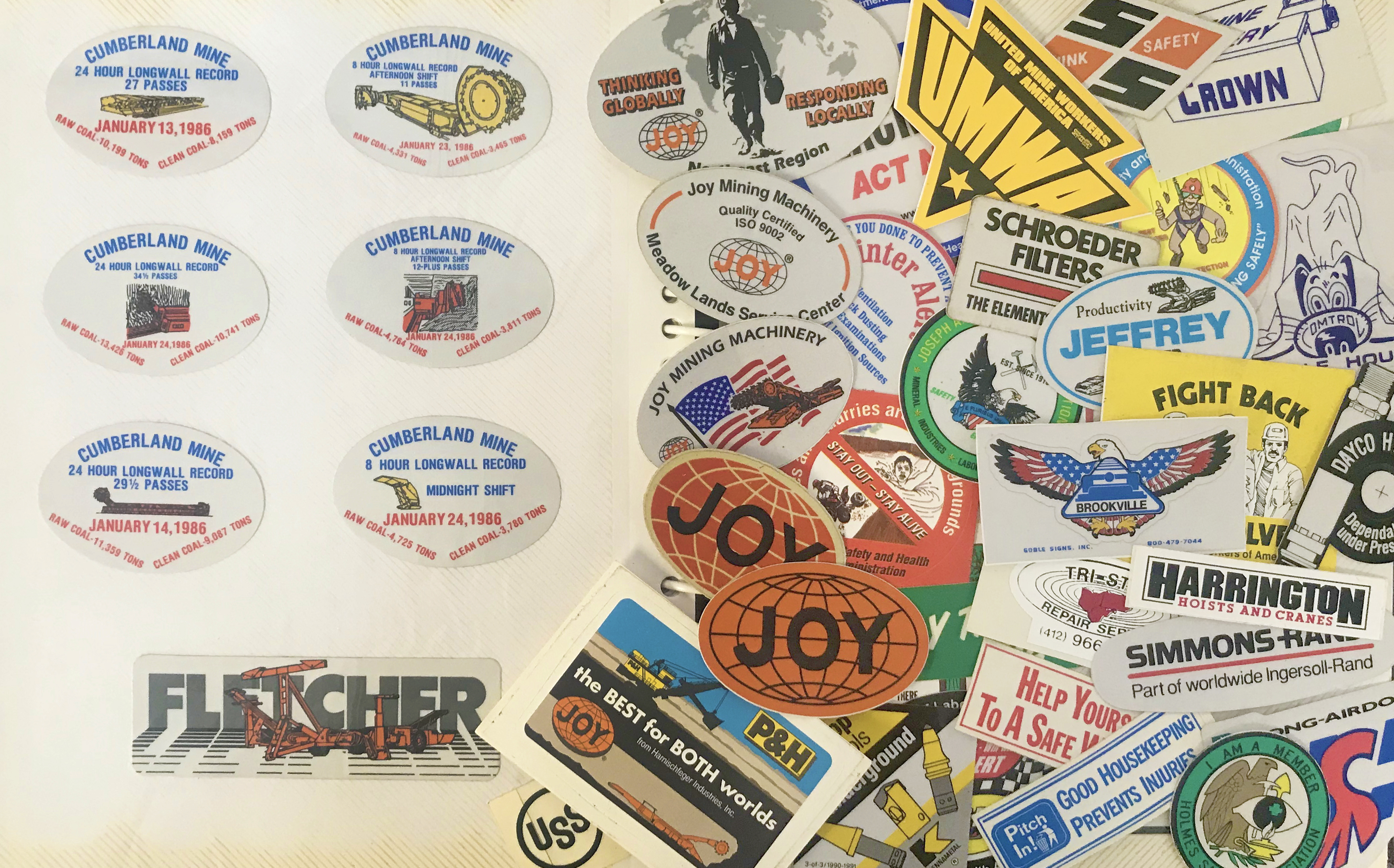The Joy of Hard Hat Decals
By Danielle Nyland
If you come from a family of coal miners, you probably have at least one photo album of colorful, high-shine decals somewhere and there’s probably at least one bright orange, sparkly decal that says JOY. Hardhat decals, originally created for safety in the miners, became one of the most treasured and collected items of mine memorabilia there ever was, becoming almost like currency in mines and at swap shows.
Miner’s hardhat decals have been around since the 1950s. While underground, miner’s needed to stay visible to each other to avoid incidents. At first, reflective tape was placed on hard hats to maintain visibility. Eventually, that tape morphed into decals. In the late 1960s, the Mine Safety and Health Administration began requiring miners to have at least six inches of reflective material on their hardhats, the stickers and the demand and interest in hardhat decals grew.
At first, those stickers stressed safety with slogans and drawn images. But as time passed, the stickers evolved into more personal designs and any business related to mining began to produce stickers to share with coal miners. The mine created stickers to pass out to their miners, commemorating milestone achievements and promoting pride in their workplace; unions did the same. Coal-related businesses, like industiral equipment manufacturer JOY, created stickers that they could pass out on visits, trade shows, and more.
Even federal agencies, like the National Institute for Occupational Safety and Health, jumped in to use the stickers to encourage safety in the mines. Elaine Cullen, appointed to develop a safety training program for miners and a frequent visitor to mines, utilized miner slang and mine humor to create many popular stickers that appealed to miners while promoting safety.
However, coal mining stickers could be hard to come by – you couldn’t buy them in a store and since so many stickers were location-specific, a miner could only get them by being in the right place at the right time. Depending on how many stickers were printed and where they were handed out, stickers could be worth far more than the paper they were printed on.
When the stickers were passed out, most miners took at least two – one to wear on their hardhat and one to keep in their collections. Miners began to swap stickers with each other locally. Then they began to swap stickers with friends across the globe. Eventually, the first sticker swaps were held and miners could travel to one place to swap stickers with other collectors, giving everyone more access to rare decal gems.
Barry Nelson and Brice Rush, Coal Show directors, wanted to raise funds by having a swap meet to trade decals, belt buckles, hats, and more. In 1983, the first King Coal Show Decal Swap was held and brought in a nice profit. The show frequently brought in collectors from Pennsylvania, West Virginia, Ohio, Maryland, Kentucky, Illinois and Virginia and had over 150 collectors at its peak. The final decal swap ended in 1993 due to declining attendance.
But what’s a coal show without interesting coal memorabilia to be bought? While the decal swap might be gone, the coal show now holds an annual swap that is part of the Eastern Mining Collectors Show circuit. Brice Rush, who holds one of the largest local collections known, was instrumental in bringing the swap back a few years ago. What started in the 80s as a decal and buckle swap is much larger event held at the Carmichaels Fire Hall from 9am – 2pm on Aug. 24. There is a $1 charge to get into the collectors show. People will be able to buy, sell, and trade items with others from Kentucky, Ohio, and more.
